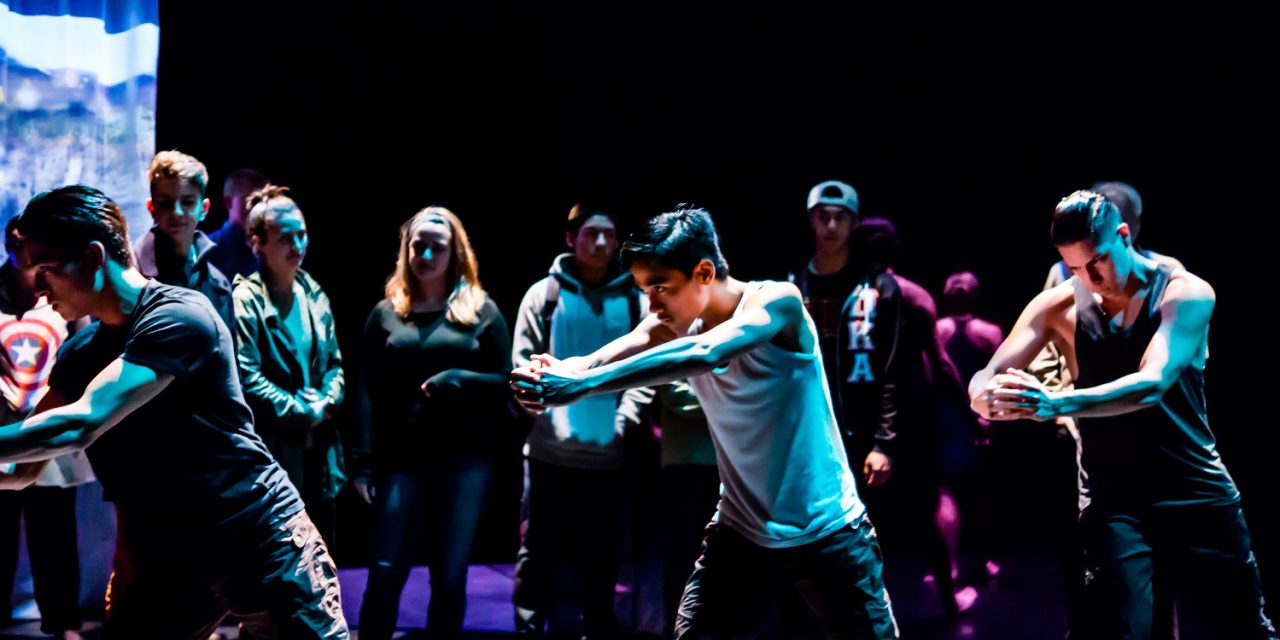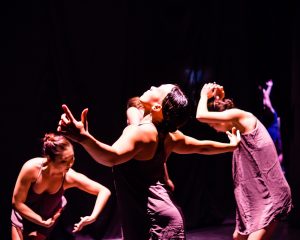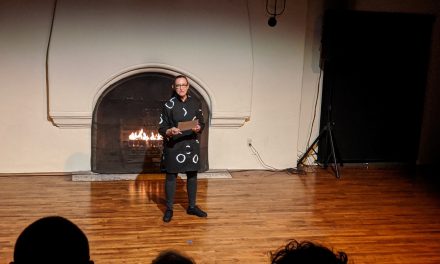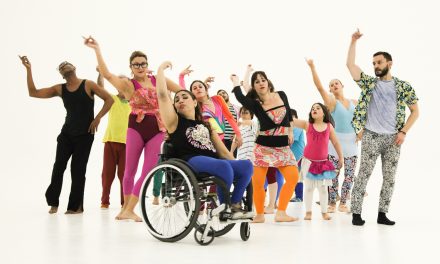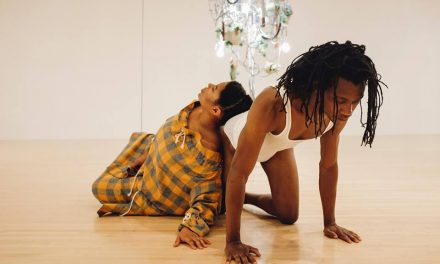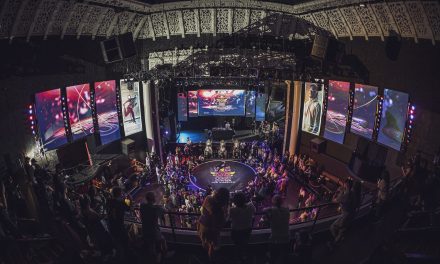The SAVANT NOBO is a 7,000-sq. ft. photo studio located in the heart of the restaurant district of Chinatown. All the walls are white, with two photography studios separated by a short hallway. This starkly beautiful environment was the venue that Boroka Nagy chose to present her work titled ONE. Nagy is the director and choreographer of the 2016 founded contemporary dance company known as Re:borN Dance Interactive. In her statement, Nagy explains how she wants the audience to be personally involved with the performers at whatever level they feel comfortable. She has an interest in creating a sense of community and one way, she feels, is to not have the audience seated facing a stage, apart from the performers.
Nagy is not the first to present work this way, or to have the audience follow the dancers as they move from one area to another. Destroying the so-called fourth wall of the stage has been an objective of artists for generations. The Judson Dance Theater, the Grand Union (dance group), and LA’s own No)one. Art House are just three examples that immediately come to mind. It is a great idea that has one huge disadvantage for the audience. It is simply impossible to see all the dancing. If you are not tall, or young and agile, seeing over, standing for an hour or moving through a group of people is next to impossible.
That said, the Re:borN Dance Interactive performance was a pleasant evening with nice dancing. The title, ONE, reflects Nagy’s desire for community, bringing people together to increase a sense of empathy. The cast of two men and six women worked very hard to include the audience by moving amongst them, having them copy their movements and directing them from one studio to the next. Some people were eager to join in; others shied away. One small group of very young women stepped into the middle of a unison movement section and the dancers adjusted beautifully without missing a beat.
Boroka Nagy was born in Budapest, Hungary. She trained in New York at The Fame School and received her BFA in the Ailey/Fordham Program before relocating here and receiving her MFA from the UC, Irvine Department of Dance. She has performed nationally and internationally, and her screendance works have been showcased in New York, California, Ohio, Italy, and Latvia.
Nagy’s movement vocabulary reflects a wide range of dance styles, fusing together ballet, modern, jazz and Afro dance. The music for several of the 10 sections had a driving Afro-jazz beat, while a few belonged more within the Pop Jazz genre. The sections titled In-Solitude, performed wonderfully by Jestoni Dagdag and Simon Harrison, and Take Me, performed with great skill by Breanna Rathbun and Emma Walsh, pulled from the more ballad song genre.
With these two solo sections, In-Solitude and Take Me, I had to move back and forth between studios to watch parts of each. It was interesting to see the same solo performed by two people with very different body types, but sadly I could not view the entirety of either. Choices had to be made.
In ONE, Nagy included a great deal of unison movement packed into a very confined area, which her cast performed very well. When Alana Isiguen was performing, however, I had a difficult time watching anyone else. Not only does she perform Nagy’s movements beautifully, but she has a presence and a smile that is completely infectious.
Annika Alejo gave a beautiful performance in Solo 1 with movement that involved mostly floorwork that moved through the surrounding audience’s legs. Although she could never be certain which direction people would move, Alejo appeared at ease navigating her way through the crowd.
I had a difficult time categorizing Nagy’s choreography; and that is not meant as a negative. At times her work felt commercial, at times it had a serious contemporary modern feel, and then again it veered into the jazz dance/MTV arena. The music did not help. I was taken back to era of disco clubs, sharing the dance floor with numerous sweaty bodies grooving to a driving, mindless musical beat.
I did not get a sense of community. I saw an audience trying to interact with dancers who were working hard to accomplish Nagy’s choreography. Interacting with them was almost impossible unless a dancer approached one and directed her/him to perform mirror-like movements, or if people walked into their space and forced them to adjust. I applaud the idea and the effort, but strongly feel that the fourth wall is still standing strong.
There were lovely photos and textures projected on the walls where the photography takes place, but no mention in the program of whose work it was. There were also no music or costume credits listed. The Lighting Designer, Martha Carter, did a wonderful job with very few instruments and the cast of young inspiring dancers who appeared very happy to be performing were Annika Alejo, Jestoni Dagdag, Kristy Dai, Simon Harrison Alana Isiguen, Breanna Rathbun, Emma Walsh, and Emily Yamashita.

